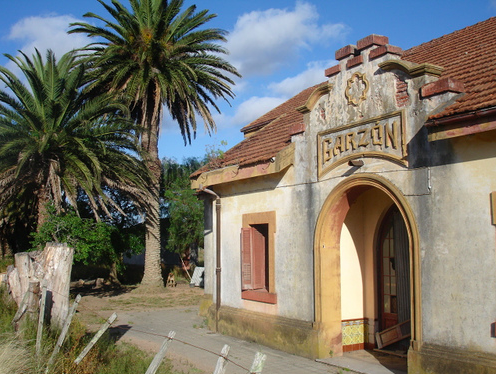
Nestled in the Uruguayan countryside, the village of Pueblo Garzón, home to just 200 residents, has become a hub of international art, attracting thousands of visitors annually through its Campo festival and the vision of renowned artists and cultural figures.
The chapel of Pueblo Garzón, a tiny village in Uruguay with just 200 inhabitants, has traded its traditional wooden pews for a sound installation by German artist Lukas Kühne, made of rubber hammers and crates. This transformation is no anomaly—every December since 2017, the village comes alive for Campo, an art festival founded by American photographer Heidi Lender.
In its eighth edition in late 2024, Campo brought together nearly 20 artists from around the world, including the United States, Singapore, South Korea, and Brazil, drawing about 6,000 visitors. Kühne, who now resides in Uruguay, is deeply enamored with the festival, calling it "a utopian project, in the best sense of the term."
"It looks like any other village, but it isn’t. Beautiful and interesting things are born here—it has its own aura," Kühne explains about Garzón, which is located 170 kilometers east of Montevideo in a region often likened to Tuscany for its vineyards and olive groves.
A "Magical Land"
The first person to bring attention to the village was acclaimed Argentinian chef Francis Mallmann, who opened a restaurant there 20 years ago. Fourteen years later, Heidi Lender fell in love with Garzón, purchasing a home and establishing a nonprofit organization to "offer artists the chance to create on this magical land."
Today, her project includes artist residencies, the festival, and soon, a campus designed by Uruguayan architect Rafael Viñoly. "It’s hard to explain what makes Garzón different—you have to come here to understand," Lender says, highlighting its unique "energy, light, people, authenticity, simplicity, tranquility, solitude, and beauty."
Garzón's charm is enhanced by its proximity—close yet far enough—from Punta del Este, the favorite beach resort of South America’s elite, known for its stunning shores and vibrant nightlife.
Near the central square, where the heart of the village beats with its chapel, town hall, former general store turned design shop, and Mallmann’s restaurant, Uruguayan artist Mauro Arbiza recently opened his art gallery—the fifth in Garzón. After nine years selling sculptures in the area, Arbiza now caters to wealthy summer visitors from Punta del Este, with works priced between $2,500 and $40,000.
"I make more connections in this village than in Miami," Arbiza says. His monumental works are featured in China and the United States, but he no longer attends prominent fairs like Art Basel.
Vintage Charm
Other gallery owners attest to the growing interest from tourists, collectors, and curators, particularly from Europe, the United States, Argentina, and Brazil. Visitors are captivated by the village’s vintage charm.
In the 1950s, Garzón thrived on the success of a wheat mill and boasted a population of 2,000—compared to just 178 today, according to the latest census.
Artigas Rodriguez, 85, has lived in the village for over 20 years. "It’s peaceful," he says, surrounded by objects he collects and sells from his humble home. Among his neighbors are notable figures like the Rolling Stones’ tailor, John Pearse, and French artist Marie Ducaté, who has a museum bearing her name in the village.
With AFP




Comments